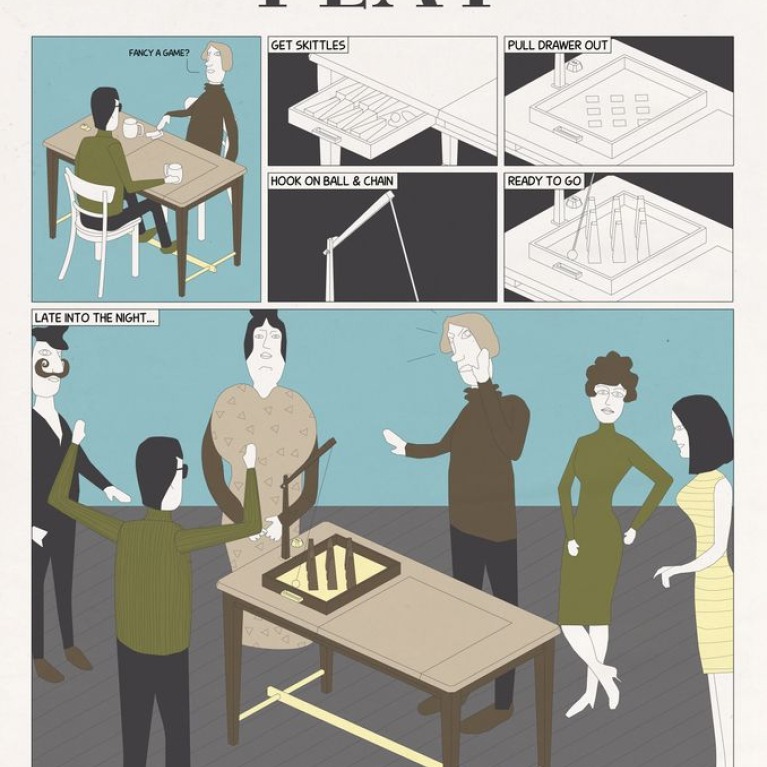Designed by aberrant architecture and handmade by Benchmark, the thinking behind their design arose from a combination of historical precedent and research into how contemporary ‘work-styles’ are evolving.
As a result, the end product is multi-functional: to support not only the traditional pub activities of eating and drinking, but also the increasing demand for temporary office space outside of the home. Amongst the ingenious features are work surfaces that can be closed and locked, a foot rest, and office organizers that transform to enable an impromptu game of ‘Devil amongst the Tailors’.
Made using only the best materials and craftsmanship, we love the look and logic behind this product.
During their architecture residency at the Victoria and Albert museum (2010) aberrant studied the original drawings of the now demolished 'Elephant & Castle' public house in Lambeth. The designs, by the architect Albert A. Webbe, reveal a mixed used building divided up into three main areas: a 'public' space for drinking; 'private' areas for the pub's regular patrons, who used the watering hole as an extension of their home and office, and a large space that was used for group meetings and community events.
Combining historical precedent with research into how contemporary 'work-styles' are evolving, Wallpaper* magazine invited aberrant architecture to design a new pub table that in addition to supporting the typical pub activities of drinking and eating, is specially considered to provide the modern nomadic worker with enhanced productivity, a sense of belonging and opportunities to interact with their fellow workers.
Perhaps the most innovative and exciting aspect of this project is that with Benchmark’s help, AHEC has documented all elements of the manufacturing process and will be putting this together with life cycle data recently collected from the American hardwood industry to produce a full ‘cradle-to-grave’ life cycle impact report for the tables.
Says David Venables, “This will be a first for our industry and we believe that this kind of transparent and scientifically based information is essential to enable manufacturers and designers to make an informed decision when it comes to the question of sustainable design.”




























